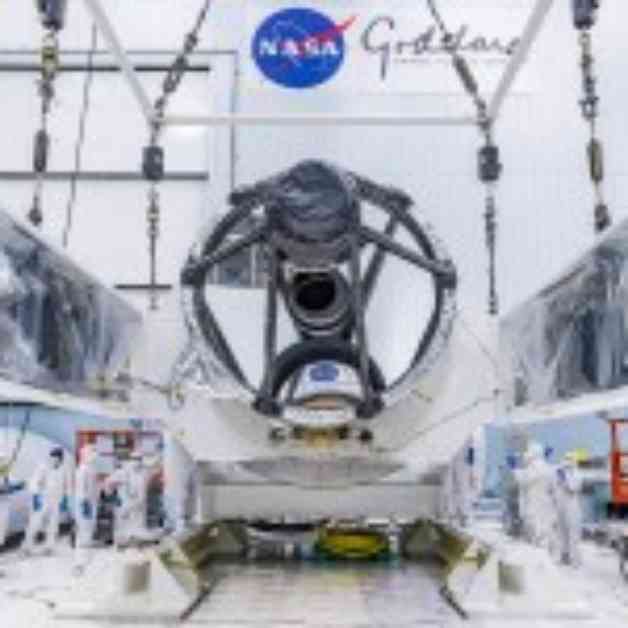NASA’s Roman Mission Telescope Completed and Delivered to Goddard Space Flight Center
NASA’s Nancy Grace Roman Space Telescope, a mission tasked with uncovering the mysteries of the universe, has reached a significant milestone with the delivery of its Optical Telescope Assembly. This essential component includes a primary mirror measuring 7.9 feet in diameter, along with nine additional mirrors, supporting structures, and electronics. The assembly was recently transported to NASA’s Goddard Space Flight Center in Greenbelt, Maryland, where the telescope is currently under construction.
Once operational, the telescope will capture cosmic light and direct it to Roman’s instruments, allowing scientists to observe billions of celestial objects across vast distances of space and time. Equipped with a Wide Field Instrument featuring a 300-megapixel infrared camera, astronomers will conduct surveys ranging from the outer regions of our solar system to the farthest reaches of the observable universe. The mission’s Coronagraph Instrument will facilitate the imaging of planets and dusty disks around distant stars with unprecedented clarity.
The Optical Telescope Assembly, crafted by L3Harris Technologies in Rochester, New York, integrates cutting-edge optics, including the primary mirror provided by the National Reconnaissance Office. Through meticulous reshaping and enhancement of inherited hardware, the assembly was tailored to meet Roman’s stringent requirements for infrared observations of unparalleled sensitivity and scope.
The assembly’s flawless design and performance are critical to the success of the mission, influencing the quality and accuracy of Roman’s scientific findings. Extensive testing procedures, overseen by the team at Goddard in collaboration with L3Harris, were conducted to ensure that the telescope assembly meets all specifications and seamlessly integrates into the overall Roman observatory infrastructure.
Rigorous tests were carried out on each optical component prior to assembly, followed by comprehensive alignment assessments. The telescope underwent simulations of launch-related stresses, including vibrations and sound waves, to verify its structural integrity. Engineers meticulously examined the functionality of actuators responsible for mirror adjustments in space and monitored gas emissions during the transition to a vacuum environment.
A month-long thermal vacuum test was conducted to evaluate the telescope’s resilience under space conditions, confirming its ability to maintain stable operating temperatures and focus levels. The assembly features approximately 100 heaters to regulate temperature fluctuations, ensuring consistent image sharpness throughout Roman’s mission duration.
Upon its arrival at Goddard, the Optical Telescope Assembly will be integrated into Roman’s Instrument Carrier, which will uphold optical alignment between the telescope and instruments. The assembly’s electronics box, serving as the telescope’s central control system, will be installed within the spacecraft alongside other essential electronics.
With this significant progress, the Roman mission remains on schedule for its planned launch in May 2027. The completion of the telescope assembly signifies a remarkable achievement for the dedicated team at NASA Goddard, reflecting their commitment to advancing scientific exploration and inspiring future generations of space enthusiasts.
Managed at NASA’s Goddard Space Flight Center in collaboration with various research institutions and industrial partners, the Nancy Grace Roman Space Telescope represents a collaborative effort to push the boundaries of astronomical discovery. As the project continues to evolve, the telescope stands as a testament to human ingenuity and the enduring spirit of exploration in the cosmos.













